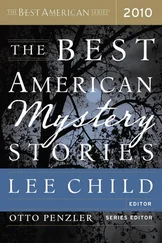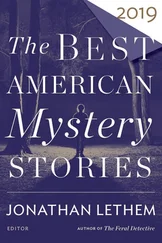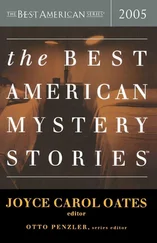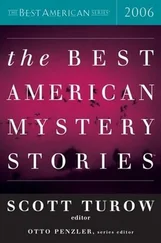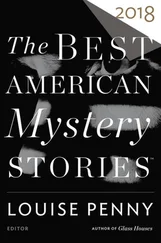Now he was sixty-seven, and of that age. He would have had to concede that as a younger man he’d often ignored his elders. He’d taken them for granted, he’d written them off as irrelevant. Of course, Kyle Cassity was a different sort of elder. There was no one quite like him.
A maverick, he thought himself. Unlabelable. Born in 1935 in Harrisburg, Pa., a long-time resident of Wayne, N.J.: unique and irreplaceable.
Among his numerous relatives he’d long been an enigma: generous in times of crisis; otherwise distant, indifferent. True, he’d had something of a reputation as a womanizer until recent years, yet he’d remained married to the same devoted wife for four decades. His three children, when they were living at home, had competed for their father’s attention, but they’d loved him, you might have said they’d worshiped him, though now in adulthood they were closer to their mother. (Outside his marriage, unknown to his family, Kyle had fathered another child, a daughter, whom he’d never known.)
Professionally, Dr. Kyle Cassity was something of a maverick as well. A tenured senior professor on the faculty of William Paterson University in New Jersey, as likely to teach in the adult night division as in the undergraduate daytime school, as likely to teach a sculpting workshop in the art school as a graduate seminar in the School of Health, Education, and Science. His advanced degrees were in anthropology, sociology, and forensic science; he’d had a year of medical school and a year of law school. At Paterson University he’d developed a course entitled “The Sociology of ‘Crime’ in America” that had attracted as many as four hundred students before Professor Cassity, overwhelmed by his own popularity, retired it.
His public reputation in New Jersey was as an expert prosecution witness and a frequent consultant for the New Jersey Department of Forensics. He’d been the subject of numerous media profiles, including a cover story in the Newark Star-Ledger Sunday magazine bearing the eye-catching caption “Sculptor Kyle Cassity fights crime with his fingertips.” He gave away many of his sculptures, to individuals, museums, schools. He gave lectures, for no fee, throughout the state.
As a scientist he had little sentiment. He knew that the individual, within the species, counts for very little; the survival of the species is everything. But as a forensic specialist he focused his attention on individuals: the uniqueness of crime victims and the uniqueness of those who have committed these crimes. Where there was a victim there would be a criminal or criminals. There could be no ambiguity here. As Dr. Kyle Cassity, he worked with the remains of victims. Often these were badly decomposed, mutilated, or broken, seemingly past reconstruction and identification. He was good at his work and had gotten better over the years. He loved a good puzzle. A puzzle no one else could solve except Kyle Cassity. He perceived the shadowy, faceless, as-yet-unnamed perpetrators of crime as human prey whom he was hunting and was licensed to hunt.
This skull! What a mess. Never had Kyle seen bones so broken. How many powerful blows must have been struck to reduce the skull, the face, the living brain, to such broken matter. Kyle tried to imagine: twenty? thirty? fifty? A frenzied killer, you would surmise. Better to imagine madness than that the killer had been coolly methodical, smashing his victim’s skull, face, teeth, to make identification impossible.
No fingertips — no fingerprints — remained, of course. The victim’s exposed flesh had long since rotted from her bones. The body had been dumped sometime in the late spring or early summer in a field above an abandoned gravel pit near Toms River in the southern part of the state, a half-hour drive from Atlantic City. Bones had been scattered by wildlife, but most had been located and reassembled: the victim had been approximately five feet two, with a small frame, a probable weight of 100 or 110 pounds. Judging by the hair, Caucasian.
Here was a grisly detail, not released to the press: not only had the victim’s skull been beaten in, but the state medical examiner had discovered that her arms and legs had been severed from her body by a “bluntly sharp” weapon like an ax.
Kyle shuddered, reading the report. Christ! He hoped the dismemberment had been after, not before, the death.
It seemed strange to him: the manic energy the killer had expended in trying to destroy his victim he might have used to dig a deep grave and cover it with rocks and gravel so that it would never be discovered. For, of course, a dumped body will eventually be discovered.
Yet the killer hadn’t buried this body. Why not?
“Must have wanted it to be found. Must have been proud of what he did.”
What the murderer had broken Dr. Cassity would reconstruct. He had no doubt that he could do it. Pieces of bone would be missing, of course, but he could compensate for this with synthetic materials. Once he had a plausible skull, he could reconstruct a plausible face for it out of clay, and, once he had this, he and a female sketch artist with whom he’d worked in the past would make sketches of the face in colored pencil, from numerous angles, for investigators to work with. Kyle Cassity’s reconstruction would be broadcast throughout the state, printed on flyers and posted on the Internet.
Homicides were rarely solved unless the victim could be identified. Kyle had done a number of successful facial reconstructions in the past, though never working at such a disadvantage. This was a rare case. And yet it was a finite task: the pieces of bone had been given to him; he had only to put them together.
When Kyle began working with the skull in his laboratory at the college, the victim had been dead for approximately four months, through the near-tropical heat of a southern New Jersey summer. In his laboratory, Kyle kept the air-conditioning at 65 degrees Fahrenheit. He played CDs: Bach’s “Well-Tempered Clavier” and the “Goldberg Variations,” performed by Glenn Gould, most suited him. Music of brilliance and precision, rapid, dazzling as a waterfall, that existed solely in the present moment; music without emotion, and without associations.
The hair! It was fair, sun-bleached brown with shades of red, still showing a distinct ripply wave. Six swaths had been gathered at the crime scene and brought to his laboratory. Kyle placed them on a windowsill, where, when he glanced up from his exceedingly close work with tweezers and bits of bone, he could see them clearly. The longest swath was seven inches. The victim had worn her hair long, to her shoulders. From time to time, Kyle reached out to touch it.
Eight days: it would take longer than Kyle anticipated. For he was working with exasperating slowness, and he was making many more small mistakes than he was accustomed to.
His hands were steady as always. His eyes, strengthened by bifocal lenses, were as reliable as always.
Yet it seemed to be happening that when Kyle was away from the laboratory, his hands began to shake just perceptibly. And once he was away from the unsparing fluorescent lights, his vision wasn’t so sharp.
He would mention this to no one. And no one would notice. No doubt it would go away.
Already by the end of the second day he’d tired of Bach performed by Glenn Gould. The pianist’s humming ceased to be eccentric and became unbearable. The intimacy of another’s thoughts, like a bodily odor, you don’t really want to share. He tried listening to other CDs, piano music, unaccompanied cello, then gave up to work in silence. Except, of course, there was no silence: traffic noises below, airplanes taking off and landing at Newark International Airport, the sound of his own blood pulsing in his ears.
Читать дальше






